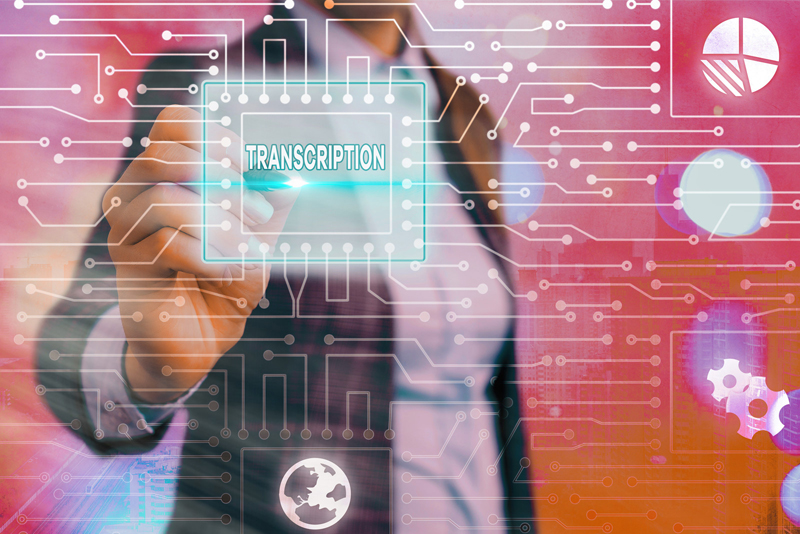
There are many tactics to improve transcription of conference calls, webinars, podcast, or any other type of digital audio recordings. Besides language and typing skills, speed, transcribing in a quiet setting, and knowing how to use online research tools, transcriptionists need to use quality transcription software and hardware. One thing that all general transcription company would agree on to add value to transcripts is time stamping.
What is a Timestamp?
Wikipedia defines a timestamp as follows: “A timestamp is a sequence of characters, denoting the date and/or time at which a certain event occurred.
|
A timestamp is the time at which an event is recorded by a computer, not the time of the event itself. |
In many cases, the difference may be inconsequential: the time at which an event is recorded by a timestamp (e.g., entered into a log file) should be very, very close to the time of the occurrence of the event recorded.”
The process of time stamping involves inserting markers to show the time into the transcript to show where the text is found in a video or audio file. The text is aligned to the recording by inserting time stamps at regular intervals. Based on the client’s requirements, transcription services insert time stamps at consistent intervals in the [00:00:00] or HH:MM:SS format, where HH, MM, and SS stand for hours, minutes, and seconds from the start of the audio or video file.
Benefits of Timestamps
Timestamps help you to find specific information in your transcripts. You can revert to the transcript any time for quick and accurate reference without having to listen to the entire recording again. The timestamps make it easier to repurpose the transcript content, such as extracting key quotes or creating highlight reels. Transcripts with timestamps are useful for litigation, panel discussions, market research interviews, focus groups, oral history, podcasts, and virtual meetings or video conferences.
According to Omega Reporting, timestamps can be an important tool for paralegals, attorneys, and trial prep teams in two ways:
- They will allow the litigation team to find blocks of testimony in the text and create clips for settlement or trial purposes.
- If the deponent is taking too much time to answer questions, timestamps can help the lawyer view the time elapsed between the questions and responses.
Timestamps and speaker identification also help lawyers keep track of the flow of information and the timeline of events. This can be crucial to create a case or to detect discrepancies in testimonies. Timestamps are also useful in legal depositions when the lawyer needs to refer to a specific part of a transcription.
Different Types of Transcription Timestamps
There are different ways to include timestamps in transcripts, such as periodic timestamps, paragraph timestamps, sentence timestamps, and speaker timestamps. Companies providing video and audio transcription services will utilize the method that best meets your specific needs and readability requirements.
- Periodic Timestamps: Clients may want time stamps placed at specific time intervals such as every 30 seconds, 1 minute, 5 minutes, 30 minutes, etc. Periodic timestamps are considered ideal for raw video footage and in situations where timestamps do not appear too frequently (e.g. every minute or two). Here’s an example using a 30-second interval:Example: Hello everyone. Thanks for joining my talk despite the short notice. I will try to cover as much as possible [00:00:30] within one hour, while including all the important points…..
- Start-End: These are placed at the start or end of each paragraph. Though less frequent and less conspicuous than other types, paragraph timestamps allow readers to identify the general section of the audio consistent with a particular part of the transcript. Here’s an example of using start-end timestamps for an interview transcript:Interviewer: [00:00:00 – 00:02:45] Hi, thank you for joining me today.
Interviewer: … 00:23:43 – 00:25:00 Thank you for your time.
- Sentence Timestamps: These timestamps indicate the start time of each sentence within the overall audio recording. They are useful when the client requires a detailed marker.[00:07:13] Interviewee: One project that stands out was when we had to migrate our company’s entire infrastructure to the cloud.
- Speaker Timestamps: These are often requested for depositions, interviews, panel discussions, and conversational text. Speaker timestamps appear at the beginning of a dialogue, making it easy to find specific questions or answers.[00:00:00 Interviewer] Thank you for joining me today. Can you please introduce yourself and tell me a bit about your background?
- Inaudible Timestamps: These are used when the audio cannot be understood or lacks clarity. The word ‘inaudible’ is typed in along with the timestamp.[Interviewee]: We had to evaluate different cloud providers, [00:03:12 Inaudible] and train our staff on the new systems.
Basically, the appropriate timestamp interval is determined based on the recording’s length and content. While inserting a timestamp every minute may suffice for shorter recordings, incorporating timestamps every time a speaker changes is the best option for longer recordings with multiple speakers.
While you can add timestamps manually, inserting them automatically using transcription tools can save time. In companies providing professional transcription services, transcriptionists use video and audio transcription tools that automatically add timestamps to the transcript as it is being generated. Many tools allow the transcriptionist to customize the format and style of the timestamps in the transcript. Automated timestamping can streamline the transcription process and enhance the usability of the final transcript.
Get accurate, time-stamped transcripts.




